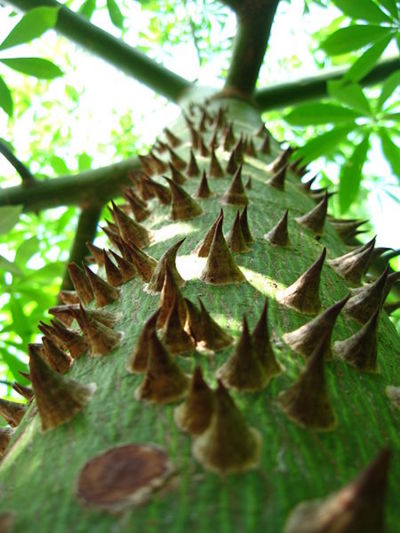Identify, Label, and Present Common Trees Shrubs and Climbers

This unit standard is for people working, or intending to work, in amenity horticulture. People credited with this unit standard are able to investigate the cultural requirements of specified plants, select plants for specific uses and sites.
Contents
- 1 This unit is used in the following courses
- 2 Identify and Explain the physical characteristics of trees, shrubs and climbers
- 3 Identify, label and present a range of amenity trees, shrubs and climbers
- 4 Investigate the cultural requirements of specified plants
- 5 Select plants for specific uses and sites
- 6 Definition
This unit is used in the following courses
Identify and Explain the physical characteristics of trees, shrubs and climbers
Basic plant parts are identified in terms of : flower, stem, node, internode, leaf blade, leaf petiole and roots.
Basic identifying features of plants are recognised and their importance in plant identification is explained.
Identify, label and present a range of amenity trees, shrubs and climbers
Forty common amenity plant specimens are visually identified, collected , pressed and dried, and mounted neatly or photographed.
Plants collected may include but are not limited to the NZHITO list;plant parts collected or photographed include - stem, foliage and flowers.
Plant Labels
Plant labels should include - botanical, common and family names; identifying features; plant type; plant use; cultural requirements; date and site collected.
Plant Specimen or photographic collection includes at least five plants from each group - trees, shrubs, climbers, New Zealand native plants.
Investigate the cultural requirements of specified plants
Range: ten plants which are grown locally.
- For each plant the required soil conditions and tolerance to variations are investigated and summarised.
Range: soil texture, soil moisture, pH, nutrients, temperature.
- For each plant the required climatic conditions and tolerance to variations are investigated and summarised.
Range: air temperature range, humidity, light level, wind exposure, salt tolerance.
- The importance of selecting plants suitable for site conditions is explained in terms of successful plant establishment and development.
Select plants for specific uses and sites
- Plants that will grow well in specific conditions are identified.
Range: three plants selected for each of the following in the local area – wet, dry, sunny, shady, acidic, alkaline, frosty, windy, coastal.
- Plants for specific uses are identified.
Range: one species selected for each of the following in the local area – shade tree, shelter to four metres, background shrubs, accent plant, visual screen, groundcover in shade, groundcover in sun, scent, seasonal flower, seasonal foliage, foliage colour, fine textured, medium textured, coarse textured.
- Plants suitable for use in specific sites are identified.
Range: one species selected for use in each of the following – specimen trees in dry areas, wet areas, windy areas, coastal areas; visual barriers in dry areas, wet areas, windy areas; specimen shrubs in wet areas, dry areas, windy areas, frosty areas, coastal areas, shady conditions.
Definition
Plants refer to trees, shrubs, and climbers, including New Zealand native plants, used in landscaping and amenity horticulture. Plants to be covered at this level require the study of botanical details for positive identification.